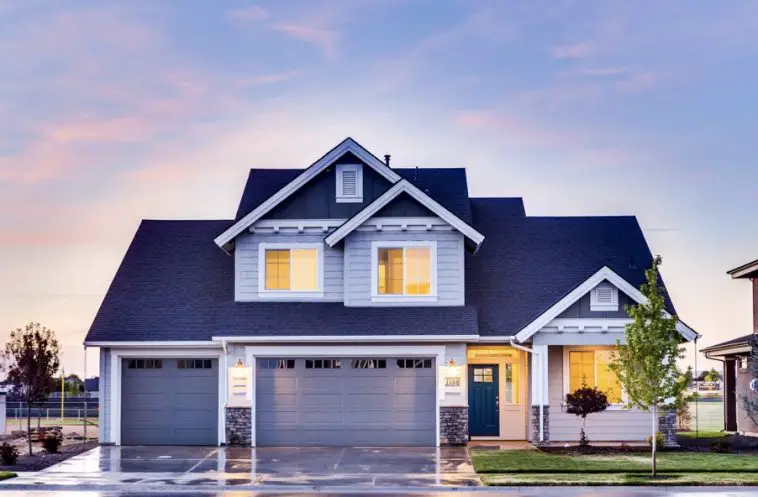Are you preparing for the worst storms that Mother Nature has to offer?
An average of 17 hurricanes hit the USA every decade, with around 6 being major ones. With the drastic changes in our planet’s climate, we can expect this average to grow as time goes on. This makes it important to protect your home against the coming onslaught of rain and wind.
The only problem is that building a hurricane-resistant home is tougher than most people think. It’s easy to forget about hurricane-proofing other parts of your home while you’re working on other parts of your house.
To help you cover all aspects of your home, here’s a simple guide that you can follow. Read on and build a hurricane proof house now.
What to Expect During a Hurricane
Hurricanes often gather more moisture and strength as it travels through the oceans. When it makes landfall, it will stop gathering moisture and stay at the same size and strength. This is when we can determine the category of the hurricane.
Category 1 hurricanes are the weakest and only have wind speeds going from 75-95 mph. Despite it being the weakest, though, it can still cause considerable damage to your property. Power lines can sway around and even get pushed down by the winds if they’re flimsy enough before the hurricane struck.
Category 2 hurricanes have sustained winds of 96-110 mph. These winds can cause extensive damages to homes. You can also expect up to 2 weeks of power loss since they’re sure to damage power lines and poles.
As mentioned above, some hurricanes fall under the major category. Any hurricane that falls under category 3 to 5 is a major hurricane and can cause considerable damage.
Category 3s are sure to damage the property, while category four can damage your home. Category 5 hurricanes are strong enough to knock down rooted trees, but the chances of getting a category 5 in any year are low.
Now that you know what to expect during a hurricane, here’s how you can prepare against them. The best hurricane-resistant homes will sustain minimal damage when a category 5 hits it. Make your home into one by following the list below.
1. Walls
The best way to prepare your exterior walls from a hurricane is to construct them while using a wind-resistant design. A wind-resistant design includes many slanted walls forming into a round shape. The rounder your home design is, the better your house will hold against strong winds.
This is because it will allow wind to pass it instead of acting like a barrier. The wind will go around the entire structure if you use this design. Flat walls will disperse the wind and are liable to get knocked down if the wind is too strong.
To increase its structural integrity, you can add many construction ties to the floor. Doing this transfers most of the forces the walls sustain into the rest of the house. Layering your walls with oriented strand boards is also a good idea.
Doing this protects your walls from impact damage that flying debris can bring. Adding these to wood panels and framing will increase its structural integrity against debris.
2. Windows
Windows are among the most vulnerable parts of the house during a hurricane. Glass has low resistance to impact damage. Wind can even be enough on its own in destroying windows if they’re strong enough.
You can make these resistant to hurricanes by reinforcing them with frames. Frames added to a window increases its wind resistance. This is because the added support tied onto the window frame transfers most of the rest of the structure.
You can also install impact windows if you want to have a clear view when staring out of your window. These are strong enough to withstand most impact damage from debris and are inexpensive to install. What’s great about them is that they can also prevent water from leaking into your home through the windows.
This is because these windows merge with the frames installed into your home. This also increases their durability as it helps them transfer force into the house. The glass itself is tough because they’re also heated and laminated.
3. Doors
Other weak points on your home are the doors. The front and backdoors you have are often the weakest since they don’t have structural support. This makes it important to fortify them against coming storms.
Making them resistant to hurricanes often means that you must retrofit them. This often includes adding simple structures to fill in the gaps that they have. These gaps allow wind and water to go through the doors.
Pressurization is also an important step in preparing your door for hurricanes. It’s a great way to keep your door from faltering during a hurricane. This is because the hurricanes often have a different pressure rating from that inside the house.
When it comes to garage doors, reinforcing them is easy. However, because they’re bigger, it will be more expensive to reinforce them. You will need a large screen to cover these doors to go against wind pressure and impact damage.
4. Roofs and Ceilings
Strong winds are often the main reason for your roof to suffer during a hurricane. They tear up the shingles and send them flying, turning them into dangerous debris. This makes hurricane proofing them all the more important.
A great way to do this is to pitch them at the right angle. Doing this ensures that the roof deflects the wind and disperses it. Low-pitched roofs won’t be able to do this and only get pounded by the wind, leading to heavy damages.
A high-pitched roof will only act as a barrier for the wind. Not being able to disperse it means that the wind keeps pushing against it. This will also result in damages but can be worse since it can topple the roof into your home.
You must also prepare to keep your shingles nailed down. These get torn off of the roof in an instant. A great way to do this is to install them differently.
Most install them from top to bottom. If you do it from the bottom going up, though, it gives the bottom shingles more layering to protect them. This is important as the shingles on your roof are the first line of defense for your ceiling.
Without proper protection, your ceiling will be the first one to go. It will soften and get destroyed as it absorbs more water., making it a big problem among old homes. It will also grow mold if you don’t dry it after the storm.
5. Outdoor Pathways
This is a part of your home that you have no choice but to do right from the get-go. Gravel pathways are great to look at, but are easy to disappear during a hurricane. High winds can tear them up and will scatter them around your property.
Without proper protection, it can poke holes into your house and destroy it. To prevent your home from becoming swiss cheese, it’s better to use cemented pathways.
These are better in many ways as they won’t get torn up from the ground like gravel. It’s also worth noting that you must remove any moveable element in your property. Things like lawn ornaments can also be detrimental to your home.
Removing and keeping them stored in a safe location prevents them from flying off. If you don’t want to remove them, make sure they’re secure in the ground. Nail them down along the pathway if you have to, but it’s always better to store them.
6. Floors
Your floors often take the brunt of the force when a hurricane strikes your home. With the proper precautions against hurricanes mean that force gets transferred around the house. Since the floors are the base of a home, most structures link back to it.
A great way to reinforce them is to build them with radial trusses. Align them as you if they’re the spokes of a wooden wheel. Doing this ensures that the floor can support the home and withstand any force.
Another way to reinforce them is to stack thick plywood on top of each other. This does a better job of preventing anything from penetrating it. This is because the layers are too thick for anything to penetrate.
It makes them great to use on the walls and the roof, too. Replace the OSB sheets if you want to cut costs while building hurricane-proof homes. You can layer them on top of each other if you want a more effective anti-impact and penetration plan.
7. Antennas and Satellite Dishes
Other elements like your antenna and or satellite dish also fall victim to strong winds. You can prevent this from happening by reinforcing them with galvanized steel bars.
What’s great about antennas is that they have little wind resistance. Their small profiles mean they won’t fall down to the strong winds as often as satellites will. You can invest less on the steel when reinforcing this.
With satellites, though, you’ll need to invest in a lot to reinforce it. The dish increases its wind resistance and can cause them to get knocked down. It’s often the best move to take them down and store them indoors when a hurricane strikes.
The water getting into your home can also spell doom to the wirings of these elements. What’s great is that there are cables with rubber boots to provide insulation. They also act as waterproofing to prevent the wires from short-circuiting from exposure.
8. Flooding Countermeasures
If you live below the ground level of your area, your home becomes prone to flooding. This can be devastating as the danger it presents is one that you can’t get rid of with ease. This is unless you have the proper recovery features installed in your home.
Having a great storm drain installed in key points of your home is a great way to do this. Install them in the lowest points of your house to ensure water gets drained. It’s also important to link them to the drainage system of your home.
A common mistake people make is having a drain that leads outside. This only means that there’s another way for water to enter your home.
You can also prevent flooding from happening in the first place. Waterproofing your home is easy if you’re building it from the ground up. Adding a layer of concrete in every room is a great way to prevent water from leaking into your home.
9. Prepare the House’s Surroundings
The final factor in preparing is the property itself. Many elements can affect how your experience will be during the hurricane. The most dangerous among them are the trees around your home.
Most neighborhoods have trees surrounding every home. There are at least 1 in between 2 houses, making them susceptible to major damages. If a hurricane is coming, it’s best to get rid of them before they destroy your home.
This is because no amount of hurricane prep can protect your house against a falling tree. Get a permit to have it removed or chopped down if you have to. It’s easy to explain that the safety of your home and family is your priority.
You should also consider trees close to power lines. Having one fall on them can cause a neighborhood-wide power outage. It makes it important for you to have a generator on hand in case you can’t convince the neighborhood officials to get rid of the tree.
Build Hurricane-Resistant Homes Today
Protect the inside and the outside of your home by making hurricane-resistant homes! Make sure you keep your family safe and warm before the hurricane season comes now!
Do you want to ensure your comfort inside the home as you wait for the hurricane to pass? With your house taken care of, you can take a load off inside and relax. Check out our other articles and guides to learn all you need to learn today!



